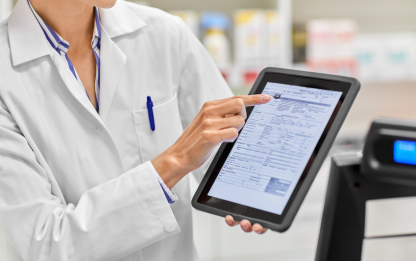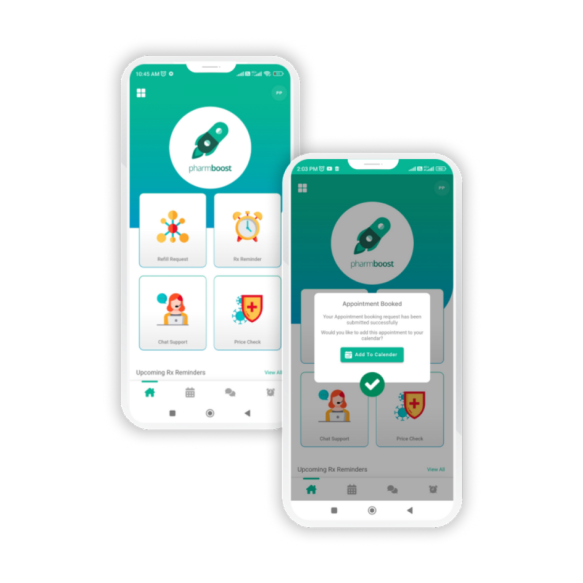Introduction
Hello there, fellow pharmacists! In our fast-paced, tech-driven world, healthcare is keeping pace with the digital revolution. One of the most impactful advancements we’re seeing is the digitization of prescription refills and transfers. This process is transforming the way we interact with our patients, making it more efficient, accurate, and convenient.
This process is a game-changer. It’s reshaping the landscape of healthcare management, especially in the realm of prescription management. Remember the days when patients had to visit us in person to refill a prescription or transfer it to a different pharmacy? Well, those days are becoming a thing of the past. Now, with just a few clicks on a digital platform, these tasks can be accomplished from anywhere.
The benefits of digitizing prescription refills and transfers are numerous. Firstly, it significantly reduces the time and effort required by both us and our patients. No more long queues at our pharmacies. We can manage prescriptions more efficiently, giving us more time to focus on patient care.
Secondly, digitization enhances accuracy. We all know manual processes can lead to errors, which can have serious consequences in our field. Digital systems minimize these risks by automating data entry and cross-checking information.
Thirdly, digital prescriptions offer greater accessibility. Patients can access their prescriptions anytime, anywhere, making it easier for them to manage their medications. This is particularly beneficial for elderly patients or those with mobility issues.
Now let’s talk about implementing digital prescription refills and transfers. It requires careful planning and execution. We need to select a suitable digital platform, train our staff to use it effectively, and educate our patients about its benefits and usage.
One such platform that has been making waves in the industry is Pharmboost. It’s a HIPAA-compliant patient engagement solution that helps us manage patient relations. The system allows us to handle appointments and reservations as well as communicate with patients via two-way messaging It’s designed to revolutionize the way we engage with our patients.
Strategies for streamlining prescription management include integrating Pharmboost with our existing healthcare systems for seamless data exchange, using analytics to track prescription patterns and identify areas for improvement, and regularly updating the system based on user feedback.
So let’s embrace this digital revolution in healthcare management. By implementing this process and adopting strategies to streamline prescription management, we can significantly improve patient care and satisfaction.
Importance of Digitizing Prescription Refills and Transfers
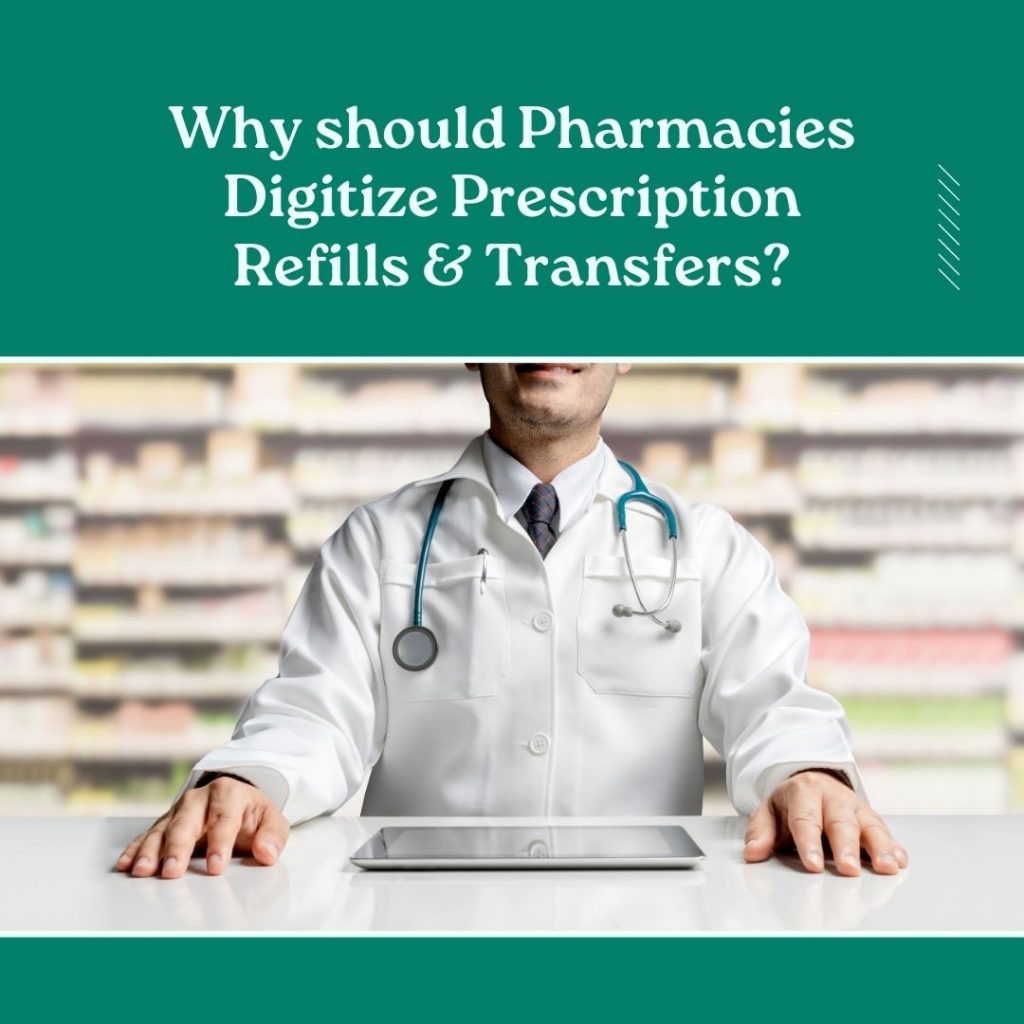
The importance of digitizing prescription refills and transfers cannot be overstated in today’s healthcare landscape. The traditional method of managing prescriptions, which heavily relies on paperwork, is fraught with challenges. This antiquated system can lead to a multitude of errors, inefficiencies, and miscommunications between healthcare providers and patients.
In the conventional system, prescriptions are handwritten or printed out, making them susceptible to misinterpretation due to illegible handwriting or unclear instructions. Moreover, the manual process of refilling and transferring prescriptions can be time-consuming and burdensome for both healthcare providers and patients. It also increases the risk of errors in medication dispensing, which can have serious consequences for patient safety.
The advent of digital technology in healthcare has paved the way for a more efficient and accurate system for managing prescriptions. Digitizing prescription refills and transfers has numerous benefits that significantly improve the accuracy and efficiency of this process.
Firstly, it reduces the risk of errors in medication dispensing. Digital prescriptions are clear, legible, and precise, eliminating the risk of misinterpretation associated with handwritten prescriptions. They also allow for automatic checks for potential drug interactions, allergies, and other patient-specific factors that could impact the safety and effectiveness of the prescribed medication.
Secondly, digitizing prescriptions improves patient safety by ensuring that patients receive the correct medication at the right dosage and at the appropriate time. It also allows healthcare providers to easily track a patient’s medication history, which is crucial for making informed decisions about their treatment plan.
Lastly, digital prescriptions enhance the overall quality of care by streamlining the prescription management process. They save time for both healthcare providers and patients by simplifying prescription refills and transfers. This allows healthcare providers to focus more on patient care rather than administrative tasks.
Digitizing prescription refills and transfers is a significant advancement in healthcare that improves accuracy, enhances patient safety, and elevates the quality of care. As we continue to embrace digital technology in healthcare, it is crucial to recognize and harness its potential to transform traditional practices for the better.
Benefits of Digitizing Prescription Refills and Transfers
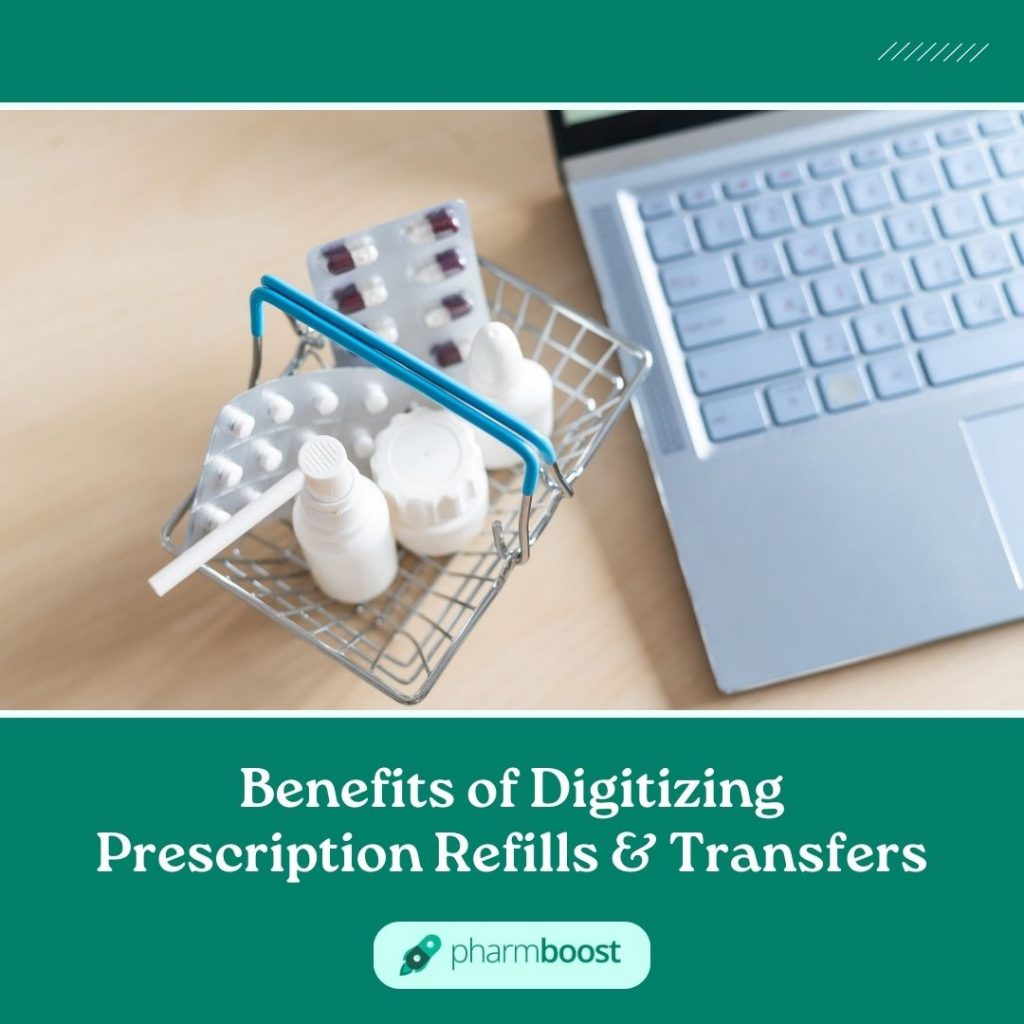
The benefits of digitizing prescription refills and transfers are manifold and have a profound impact on the healthcare system:
- Efficiency:
One of the most significant advantages of digital prescriptions is their efficiency. The process of filling and transferring prescriptions digitally is swift, leading to a considerable reduction in the time spent by healthcare providers and patients. This efficiency is not just about speed, but also about the seamless integration of digital prescriptions into the healthcare workflow. Healthcare providers can send digital prescriptions directly to the pharmacy, eliminating the need for patients to physically carry their prescriptions. This streamlined process saves valuable time for both parties, allowing healthcare providers to see more patients and patients to receive their medications more quickly. - Accuracy:
Digital prescriptions also enhance accuracy in medication dispensing. Traditional handwritten prescriptions can often lead to errors due to illegible handwriting or misunderstanding verbal instructions. However, digital prescriptions eliminate these issues as they are clear, precise, and easy to understand. They reduce the risk of medication errors, ensuring that patients receive the correct medication at the right dosage. - Convenience:
The convenience offered by digital prescriptions is another significant benefit. Patients can request refills online at their convenience, eliminating the need to visit the pharmacy in person. This is particularly beneficial for elderly patients, those with mobility issues, or those living in remote areas. It also means that patients can receive their medications without interrupting their daily routines or work schedules. - Tracking:
Lastly, digital prescriptions make it easier to track medication history. This feature is incredibly useful for managing chronic conditions where long-term medication use is common. Healthcare providers can easily access a patient’s medication history, allowing them to make informed decisions about treatment plans and monitor potential drug interactions. This comprehensive view of a patient’s medication history ensures continuity of care and contributes to better health outcomes.
Digitizing prescription refills and transfers offers numerous benefits that enhance efficiency, accuracy, convenience, and tracking in healthcare delivery. As we continue to embrace digital technology in healthcare, these benefits will undoubtedly lead to improved patient care and outcomes.
How to Digitize Prescription Refills and Transfers
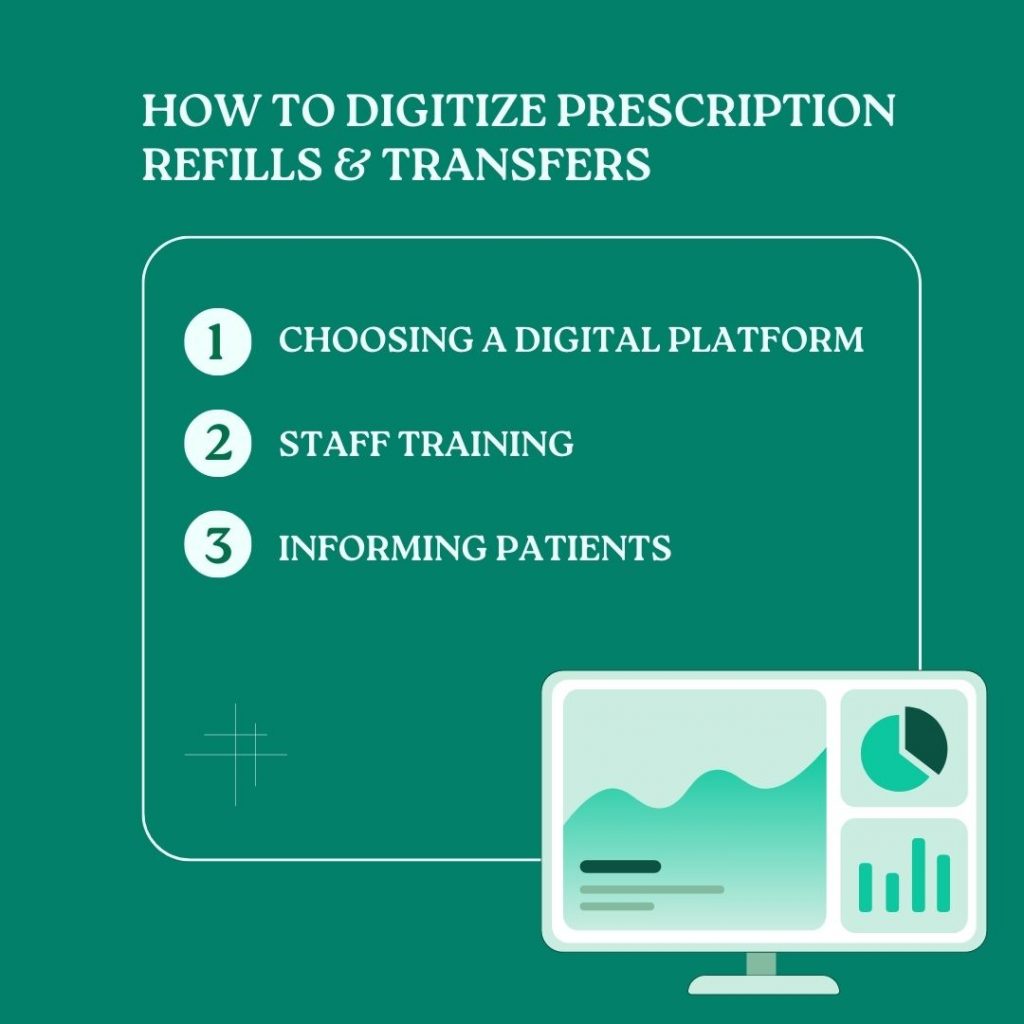
In the digital age, healthcare is undergoing a significant transformation. One of the most notable changes is the shift towards digitizing prescription refills and transfers. This process not only streamlines the workflow for healthcare providers but also enhances the patient experience. Here are some step for how to implement this system:
- Step 1: Choosing a Digital Platform
The first step in digitizing prescriptions is selecting an appropriate digital platform. Numerous platforms offer prescription management services, each with its unique features and benefits. When choosing a platform, consider factors such as ease of use, integration with existing systems, security features, and cost. The chosen platform should align with your healthcare facility’s needs and objectives.Digital prescriptions can transform the prescription process and make things more efficient1. They can prevent prescription drug errors, reduce the number of lost prescriptions, improve medication adherence, save time, enhance accuracy, and ensure patient’s safety. - Step 2: Staff Training
Once you’ve chosen a digital platform, the next step is to train your staff on how to use it. This training should cover all aspects of the platform, including entering patient information, managing prescriptions, and handling refills and transfers. It’s crucial that all staff members are comfortable using the platform to ensure a smooth transition to the digital system. - Step 3: Informing Patients
The final step in implementing digital prescriptions is informing your patients about the new system. Explain how it works and how it will benefit them. For instance, digital prescriptions can reduce waiting times, provide reminders for refills, and allow easy transfer of prescriptions between pharmacies. Encourage patients to ask questions and provide feedback on their experience with the new system.
Challenges in Implementing Digital Prescriptions
One of the most common challenges is the cost of implementing an e-prescribing system. Healthcare providers need to invest in the necessary hardware and software, as well as training for staff members. Additionally, ongoing costs for system maintenance and updates can add up over time.
Another challenge is potential e-prescribing system errors. While digital systems can reduce errors related to handwriting or oral communication, they can introduce new types of errors. For example, technical glitches could lead to incorrect information being entered or transmitted.
Privacy and data sharing are also significant concerns when implementing digital prescriptions. Healthcare providers must ensure that they comply with all relevant laws and regulations regarding patient data. They also need to put measures in place to protect against data breaches.
Despite these challenges, the benefits of digitizing prescription refills and transfers often outweigh the potential drawbacks. By carefully planning your implementation process and addressing these challenges head-on, you can successfully transition to a digital prescription system.
By following these steps and being aware of potential challenges, you can successfully digitize your prescription refills and transfers. This will lead to improved efficiency in your healthcare facility and enhanced satisfaction among your patients.
Strategies for Streamlining Prescription Management
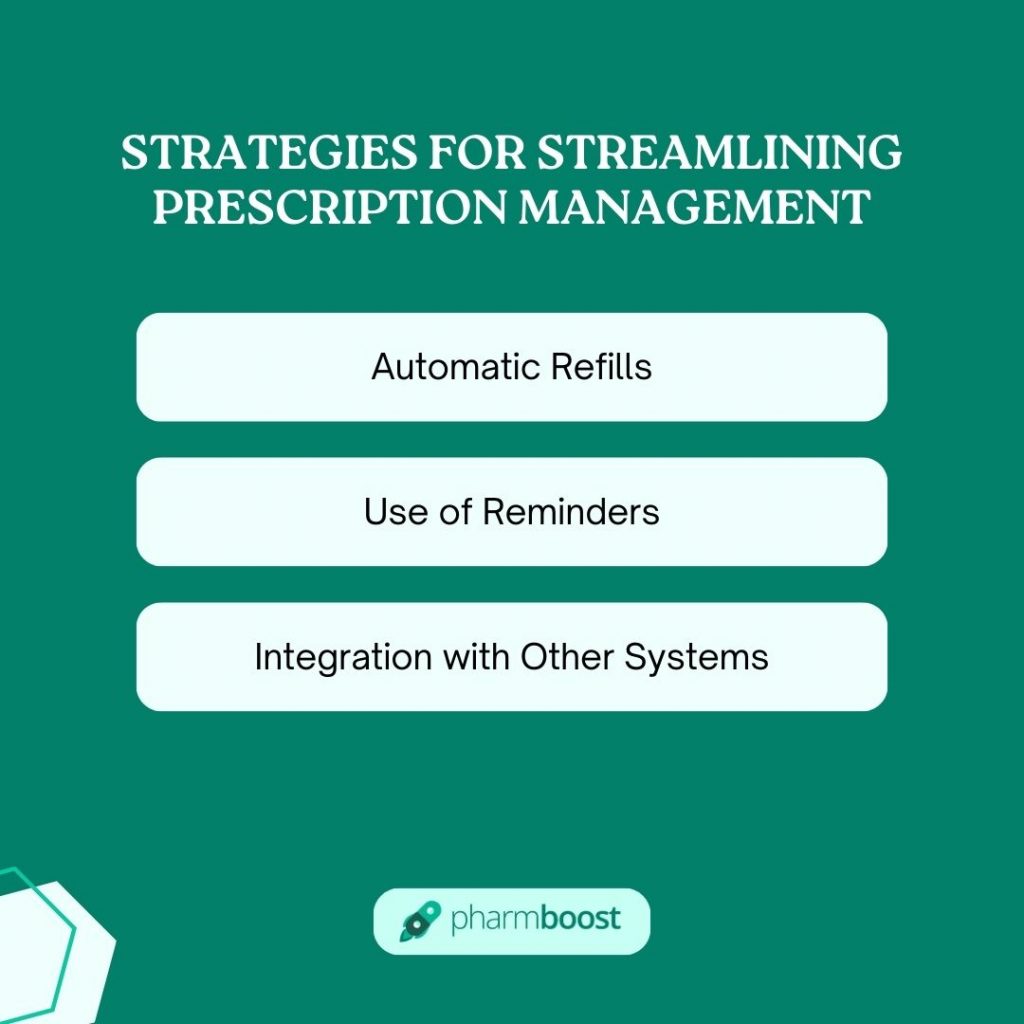
Prescription management is a critical aspect of healthcare, ensuring that patients have access to their necessary medications and take them as directed. Streamlining this process can lead to improved patient outcomes, increased adherence to medication regimens, and overall better health. Here are some strategies for enhancing prescription management:
- Automatic Refills:
One of the most effective strategies for streamlining prescription management is implementing automatic refills. This feature allows prescriptions to be refilled automatically when they’re about to run out, ensuring that patients always have their medications on hand. It eliminates the need for patients to remember when to refill their prescriptions, reducing the risk of missed doses. Automatic refills can be particularly beneficial for patients with chronic conditions who require long-term medication therapy. - Use of Reminders:
Another strategy is the use of reminders. These can be in the form of text messages, emails, or app notifications that alert patients when it’s time to take their medication or refill their prescriptions. Reminders can help improve medication adherence, especially among patients who take multiple medications or those who have busy schedules. They serve as a simple yet effective tool in helping patients manage their medications more effectively. - Integration with Other Systems:
Integrating the prescription management system with other systems, such as electronic health records (EHRs), can provide a more comprehensive view of a patient’s health. This integration allows healthcare providers to see all of a patient’s medications in one place, making it easier to identify potential drug interactions or duplications. It also enables providers to monitor a patient’s medication adherence and make necessary adjustments to their treatment plan.
Streamlining prescription management through automatic refills, reminders, and system integration can significantly improve medication adherence and patient outcomes. These strategies not only make it easier for patients to manage their medications but also enable healthcare providers to deliver more effective and personalized care.
Conclusion
In conclusion, the digitization of prescription refills and transfers marks a pivotal moment in the evolution of healthcare delivery. This transformation not only enhances efficiency and accuracy but also elevates the level of convenience for both healthcare providers and patients. The ability to track medication history digitally further ensures a seamless and personalized healthcare experience.
In this context, Pharmboost, a patient engagement solution, emerges as a game-changer. By integrating Pharmboost into their systems, healthcare providers can leverage its advanced features to streamline prescription management effectively. This not only optimizes their workflow but also empowers patients by giving them greater control over their health journey.
Thus, by embracing digital solutions like Pharmboost and implementing strategies for efficient prescription management, we can significantly improve patient care. This is not just a step forward for healthcare providers; it’s a giant leap towards creating a healthier future for all.
Recent Post
- 5 Actionable Tips to Improve Patient Engagement within 1 Month
- Social Media Check List for Pharmacy Social Media Marketing
- Pharmacy Social Media Marketing 13 dos and don’ts to know
- Patient Engagement Barriers in Your Pharmacy & How Software Can Help You Overcome Them
- How to Attract New Patients and Boost Sales with Local Pharmacy Marketing


